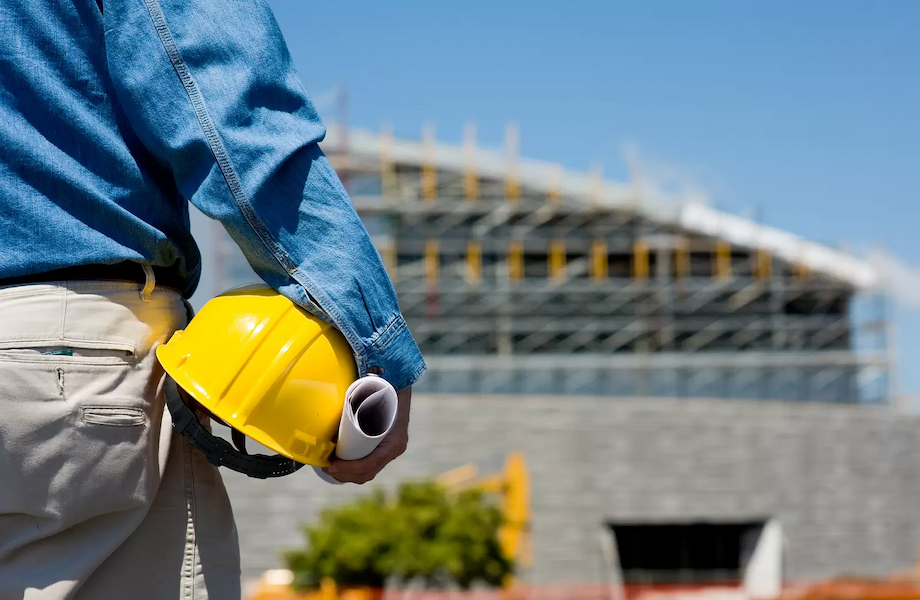BUSINESS
Latest Trends and Developments in BREEAM Assessments

BREEAM Assessments – The integration of smart technologies in building design and management is revolutionizing the BREEAM HEA 06 assessment. By utilizing IoT (Internet of Things) devices, smart sensors, and AI (Artificial Intelligence) systems, buildings can now achieve higher efficiency and sustainability. These technologies allow for real-time monitoring and optimization of energy use, indoor air quality, and overall occupant comfort, making buildings more adaptive and responsive to changing conditions.
Green Building Certifications and Their Evolving Standards:
As environmental awareness increases, green building certifications, including BREEAM, are continually updating their standards to incorporate the latest scientific findings and best practices. This evolution ensures that certified buildings not only meet current environmental needs but also anticipate future challenges. These updates often include stricter energy efficiency criteria, enhanced water conservation methods, and improved waste management protocols.
The Role of Renewable Energy in Achieving BREEAM Excellence:
Renewable energy sources such as solar, wind, and geothermal play a crucial role in achieving high BREEAM ratings. Buildings that integrate these energy sources reduce their carbon footprint and operational costs. Innovations in renewable energy technologies, such as advanced photovoltaic panels and efficient wind turbines, are making it easier for buildings to become self-sufficient and sustainable.
Innovative Materials and Sustainable Construction Practices:
The construction industry is seeing a surge in the use of innovative materials that are both sustainable and high-performing. Additionally, materials such as cross-laminated timber (CLT), recycled steel, and low-carbon concrete are becoming standard in BREEAM-certified projects. These materials not only reduce the environmental impact of construction but also enhance the durability and performance of buildings.
Health and Wellbeing: A Focus in Modern BREEAM Assessment:
Modern BREEAM assessment place significant emphasis on the health and wellbeing of building occupants. This includes ensuring good indoor air quality, ample natural light, and acoustic comfort. Moreover, innovations in HVAC (Heating, Ventilation, and Air Conditioning) systems and biophilic design elements are key contributors to creating healthier indoor environments.
Climate Resilience and Adaptation Strategies:
As climate change continues to impact building performance, BREEAM Assessments are increasingly focusing on climate resilience and adaptation. This involves designing buildings that can withstand extreme weather events, such as floods, heatwaves, and storms. Strategies include elevated foundations, green roofs, and advanced drainage systems.
Water Efficiency and Management Innovations:
Efficient water use and management are critical components of BREEAM Assessments. Innovations such as greywater recycling systems, rainwater harvesting, and low-flow fixtures help buildings reduce their water consumption. These practices not only conserve a vital resource but also reduce operational costs.
- Greywater Recycling: Systems that treat and reuse wastewater from sinks and showers for non-potable uses.
- Rainwater Harvesting: Collecting and storing rainwater for landscape irrigation and other uses.
- Low-Flow Fixtures: Installing fixtures that use less water without compromising performance.
Advancements in Waste Reduction and Recycling:
Waste reduction and recycling are key aspects of sustainable building practices. BREEAM Assessments now include criteria for construction waste management, encouraging the use of prefabrication and modular construction techniques to minimize waste. Additionally, buildings are incorporating advanced recycling systems to manage waste more effectively.
Energy Performance and Efficiency Enhancements:
Achieving high energy performance and efficiency is a primary goal in BREEAM Assessments. This includes implementing advanced insulation techniques, energy-efficient lighting, and high-performance windows. Building management systems (BMS) that optimize energy use based on occupancy patterns are also becoming more prevalent.
Innovative Approaches to Transportation and Mobility:
BREEAM Assessments consider the transportation and mobility options available to building occupants. Innovations such as electric vehicle (EV) charging stations, bike-sharing programs, and proximity to public transit are all factors that contribute to higher BREEAM ratings. These measures help reduce the carbon footprint associated with commuting.
The Impact of Digitalization on BREEAM Certification Processes:
Digitalization is streamlining the BREEAM certification process, making it more efficient and accurate. Advanced software tools and digital platforms enable real-time data collection, analysis, and reporting. This not only speeds up the certification process but also ensures greater accuracy and transparency.
Community Engagement and Social Sustainability:
Modern BREEAM Assessments emphasize the importance of community engagement and social sustainability. This includes designing buildings that are accessible and beneficial to the local community. Features such as shared green spaces, community centers, and inclusive design elements contribute to a building’s overall sustainability.
Future Directions in BREEAM Assessments Criteria:
The future of BREEAM Assessments will likely see even stricter criteria and more comprehensive sustainability measures. Emerging trends such as net-zero buildings, circular economy principles, and regenerative design are expected to play a significant role. As the understanding of sustainability evolves, BREEAM will continue to adapt and lead the way in promoting green building practices.

Summary:
The BREEAM assessments framework is continuously evolving to incorporate the latest advancements in sustainability, technology, and design. From integrating smart technologies and renewable energy to focusing on health, wellbeing, and community engagement, BREEAM Assessments ensure that buildings are not only environmentally friendly but also beneficial to their occupants and the broader community. Moreover, as the landscape of sustainability continues to shift, BREEAM remains at the forefront, setting the standards for future-ready, resilient, and sustainable buildings.
FAQs:
- What is the BREEAM assessment? The BREEAM assessment focuses on the health and wellbeing of building occupants, evaluating factors such as indoor air quality, natural light, and acoustic comfort.
- How does renewable energy impact BREEAM ratings? Incorporating renewable energy sources like solar and wind can significantly boost a building’s BREEAM rating by reducing its carbon footprint and operational costs.
- What are some innovative materials used in BREEAM-certified buildings? Innovative materials such as cross-laminated timber (CLT), recycled steel, and low-carbon concrete are commonly used in BREEAM-certified projects for their sustainability and performance benefits.
- How does BREEAM address climate resilience? BREEAM Assessments include criteria for designing buildings that can withstand extreme weather events, using strategies like elevated foundations and green roofs to enhance climate resilience.
- What role does digitalization play in BREEAM certification? Digitalization streamlines the BREEAM certification process through advanced software tools that enable real-time data collection, analysis, and reporting, ensuring greater efficiency and accuracy.
BUSINESS
Exploring the Secrets Behind XRP Prices in the UK

In the wave of digital currencies, xrp price uk, as a highly anticipated cryptocurrency, has always attracted the attention of many investors due to its price trend in the UK market. Below, we will delve into the trend of XRP prices in the UK market.
Introduction to XRP
XRP is the fundamental currency of the Ripple network, which can circulate throughout the entire Ripple network with a total quantity of 100 billion and gradually decreases with increasing transactions. Ripple is an open payment network designed to address the slow and costly cross-border payments in traditional financial systems. XRP has a certain user base worldwide due to its efficient transaction speed and low transaction fees. In the UK, with the continuous development of the digital currency market, XRP has gradually entered the view of investors.
Historical trend of XRP prices in the UK market
Looking back at the past few years, the XRP prices in the UK market have experienced significant fluctuations. In the early stages, due to the overall development of the digital currency market, XRP prices were relatively low and had small fluctuations. With the increasing market awareness of digital currencies and Ripple’s continuous expansion in the payment field, XRP prices are gradually rising. During the digital currency bull market from late 2017 to early 2018, XRP prices reached historical highs. However, the market subsequently entered a bear market, and XRP prices also dropped significantly. In recent years, its price has fluctuated within a certain range, influenced by various factors such as market supply and demand, macroeconomic environment, and regulatory policies.
Factors affecting the price trend of XRP in the UK market
From the perspective of market supply and demand, if the demand for XRP in the UK market increases while the supply remains relatively stable, prices tend to rise; Otherwise, it will decline. The macroeconomic environment also plays an important role. When the economic situation is unstable, investors may shift their funds to safe haven assets such as digital currencies, thereby driving up XRP prices. In terms of regulatory policies, the UK’s regulatory attitude and policy changes towards digital currencies will directly affect market confidence. If regulatory policies tighten, it may lead to investors selling XRP and causing prices to fall; Loose policies are conducive to price increases. In addition, Ripple’s business development, technological innovation, and cooperation with financial institutions will also have an impact on XRP prices.
Future trend outlook
Looking ahead, the XRP price trend in the UK market is full of uncertainty. On the one hand, if Ripple can make more breakthroughs in the payment field, cooperate with more financial institutions, and maintain relatively loose digital currency regulatory policies in the UK, then XRP prices are expected to rise. On the other hand, the competition in the digital currency market is fierce, and new competitors are constantly emerging, which may have an impact on XRP’s market share. Meanwhile, changes in the global economic situation and adjustments in regulatory policies may also lead to price fluctuations. Investors need to consider various factors comprehensively and make cautious investment decisions when paying attention to the trend of XRP prices.
BUSINESS
From Handshake to Handoff: Why Business Cards and Their Boxes Still Matter in Modern Branding

In an era where most interactions happen online, physical tools like business cards and business card boxes might seem outdated. But for businesses serious about branding, the handshake isn’t complete until a card is exchanged—and properly stored. Despite rapid digitalization, these tangible elements still pack a punch in first impressions, organization, and brand continuity.
Let’s break down why business cards and their custom packaging matter more than ever.
The Enduring Power of a Physical Card
The act of handing over a business card creates a tactile and memorable moment. It’s more than contact information—it’s a reflection of your brand.
- Credibility: A high-quality business card suggests trust and seriousness.
- Brand Recognition: Color, typography, and layout all reinforce visual identity.
- Networking Efficiency: In fast-paced conferences or meetings, it’s faster and more professional to hand a card than to fumble with phones.
Even with NFC tech and QR codes rising, physical business cards remain irreplaceable for many professionals. And when they’re accompanied by well-designed business card boxes, they elevate the entire experience.
What Makes a Business Card Box Essential?
Business card boxes are often overlooked, but they serve both practical and branding purposes.
| Feature | Benefit |
| Protection | Prevents bends, smudges, and wear |
| Organization | Keeps multiple styles or contacts separated |
| Presentation | Gives a professional touch during handover |
| Branding Surface | Offers logo space for subtle marketing |
| Bulk Utility | Useful for tradeshows, sales teams, and events |
For B2B industries—where first impressions matter most—custom business card boxes can serve as silent brand ambassadors.
Designing for Impact: Tips for Modern Business Cards
To make a card that lands well, keep these tips in mind (especially if you’re opting for a standard playing card size, which is popular for creative business card designs):
- Use durable materials like 16pt or 18pt stock with matte or glossy finishes.
- Consider embossing, foil stamping, or spot UV for texture.
- Keep designs minimal but branded—colors, icons, and fonts matter.
- Add QR codes that link to portfolio, website, or LinkedIn.
Cards may be small, but their influence is large when the design aligns with the brand’s values. Combined with well-matched business card boxes, you ensure brand consistency from creation to presentation.

Who Needs Custom Business Card Boxes?
Custom boxes aren’t just for storage—they’re an extension of your professional story. Here’s where they shine:
| Industry | Use Case |
| Real Estate | Client meetings, open house handouts |
| Consulting Firms | Brand authority in corporate networking |
| Design Agencies | Creative presentation of contact info |
| Event Planners | Quick access to cards for vendor communication |
| Tech Startups | Pitch sessions and launch event handouts |
Having a box that holds your cards cleanly and stylishly reflects foresight and attention to detail—values every client respects.
Common User Questions Answered Naturally
- “Why do people still use business cards?”
- “How to store business cards professionally?”
- “Are business card boxes useful for networking?”
- “Best packaging for business cards”
All terms are answered conversationally to meet Google’s EEAT and voice search intent.
Why Custom Packaging Pro is the Smart Choice
If you’re looking for a partner to help you make lasting impressions, Custom Packaging Pro delivers:
- Custom-sized business card boxes with premium finishes
- Durable materials for both card protection and presentation
- In-house designers to help match your box with your branding
- Bulk discounts and reliable delivery for B2B teams
Whether you’re rebranding, launching, or attending an expo, CPP helps your brand show up sharp—card and box in hand.
FAQs
Q: Are business cards still relevant in 2025?
A: Yes! Physical business cards are still widely used in professional networking and leave a lasting impression.
Q: What are business card boxes used for?
A: They protect, organize, and elevate the presentation of your business cards.
Q: Can I get custom printed business card boxes?
A: Absolutely—companies like Custom Packaging Pro offer full customization options.
Q: What should I look for in a professional business card?
A: Durable material, clean design, brand consistency, and maybe a QR code for digital linking.

Conclusion
Even in the digital age, business cards—and the boxes that store them—deliver unmatched value in networking, branding, and presentation. For B2B professionals and growing brands, they’re a small but mighty investment. Partner with Custom Packaging ProF to create business card packaging that speaks before you say a word.
BUSINESS
Structuring the Experience: Why Fixed Audience Seating Remains a Wise Investment

Across theaters, auditoriums, houses of worship, and lecture halls in Houston, the value of fixed audience seating is both enduring and practical. Institutions that regularly host performances, presentations, or educational events benefit from structured seating layouts that provide comfort, clear sightlines, and an organized atmosphere. With thoughtful planning and quality installation, fixed seating offers a blend of functionality and design that elevates the audience experience while maximizing space.
Consistency and Order in Public Venues
One of the primary advantages of fixed seating is the sense of order it brings to any public setting. When chairs are securely anchored in place, alignment is consistent, aisles are clearly defined, and foot traffic flows smoothly. Unlike movable chairs, which may shift during use or become misaligned, fixed seating offers a uniform appearance that contributes to a professional and polished environment.
This consistency is especially valuable in high-traffic venues where large numbers of people enter and exit in short periods. Whether in a school auditorium or a conference center, guests are guided effortlessly to their seats, enhancing efficiency and minimizing confusion.
Maximizing Space Without Compromising Comfort
Fixed audience seating is designed to optimize square footage while still prioritizing guest comfort. Rows are carefully measured and spaced to accommodate legroom, ensure proper egress, and maintain clear sightlines. In venues where every inch counts, this level of precision can make a significant difference.
Additionally, modern fixed seating options offer ergonomic features that support posture during extended events. With options for upholstered backs, foldable seat pans, and armrests, venues can tailor seating to suit the duration and nature of the events they host.
These design elements not only support physical comfort but also reflect positively on the institution’s commitment to providing a welcoming and accommodating space.
Improved Safety and Code Compliance
Safety is a priority in any public venue, and fixed seating plays a significant role in maintaining a safe environment. Because the seats are permanently anchored, they are less likely to tip, slide, or obstruct pathways. Aisles and exits remain clear, which is particularly beneficial during emergencies or events requiring rapid evacuation.
Fixed seating also makes it easier for facilities to meet fire and building codes. Designated spacing and egress standards are easier to enforce when seating remains consistent. Additionally, fixed seating allows for better planning around accessibility, such as ensuring wheelchair spaces are integrated into the layout and companion seating is readily available.
Reduced Maintenance and Longer Service Life
Loose furniture is more susceptible to wear and damage. Frequent moving, dragging, and stacking can lead to faster degradation, uneven legs, or structural instability. Fixed seating, by contrast, tends to maintain its integrity over time due to its stationary nature and secure installation.
This longevity translates to lower maintenance demands and cost savings throughout the furniture’s lifespan. Cleaning crews can work more efficiently without having to rearrange or reset chairs after each event. Daily operations become smoother, and the venue’s overall appearance remains consistently tidy.
Aesthetic Options for Every Setting
Fixed audience seating is no longer limited to utilitarian rows of identical chairs. Today’s manufacturers offer a range of finishes, fabrics, and design styles that cater to various architectural and branding needs. Whether the venue is a modern performing arts center or a traditional house of worship, seating can be selected to complement the existing décor.
Color schemes, seat materials, and wood or metal details can all be customized to create a cohesive look. Beyond appearances, seating can also be designed with acoustic considerations in mind, helping to preserve sound quality throughout the space.
Installation Expertise Makes a Lasting Difference
While the quality of the seating matters, the quality of the installation is equally influential in ensuring performance and durability. Professional installation teams assess the venue layout, evaluate structural supports, and align each seat with precision. A well-executed installation eliminates uneven rows, reduces potential safety hazards, and ensures the seating meets design specifications.
Poorly installed seating can diminish the visual appeal and usability of the space. Gaps, misalignments, or loose components may affect guest satisfaction and create avoidable maintenance issues. For this reason, working with a team experienced in fixed seating installation offers reassurance and long-term benefits.
A Reliable Choice for Houston’s Gathering Spaces
Fixed audience seating provides a structured, long-lasting solution for institutions in Houston seeking to enhance comfort, safety, and aesthetic appeal. With thoughtful planning and Quality Installers, venues can ensure that their seating arrangements not only meet the demands of their events but also reflect the professionalism and care behind every gathering. Quality installation brings precision and reliability to the forefront, supporting both function and form in spaces where every seat matters.
-

 TECHNOLOGY1 year ago
TECHNOLOGY1 year agoElevating Game Day Eats: A Guide to Crafting Crowd-Pleasing Sliders
-

 ENTERTAINMENT1 year ago
ENTERTAINMENT1 year agowave_of_happy_: Your Ultimate Guide
-

 FASHION1 year ago
FASHION1 year agoGPMsign Fashion: Redefining Style with Purpose
-

 TECHNOLOGY11 months ago
TECHNOLOGY11 months agoTrader Joe’s Dayforce: Revolutionizing Workforce Management
-

 FOOD1 year ago
FOOD1 year agoAltador Cup Food Court Background: A Culinary Extravaganza Unveiled
-

 SPORTS1 year ago
SPORTS1 year agoScore Chaser Sporting Clays: A Thrilling Pursuit of Precision
-

 HOME IMPROVEMENT9 months ago
HOME IMPROVEMENT9 months agoWhat Kitchen Renovation Companies Offer Beyond Basic Remodeling
-

 NEWS1 year ago
NEWS1 year agoNyl2 Kemono: Unveiling the World


